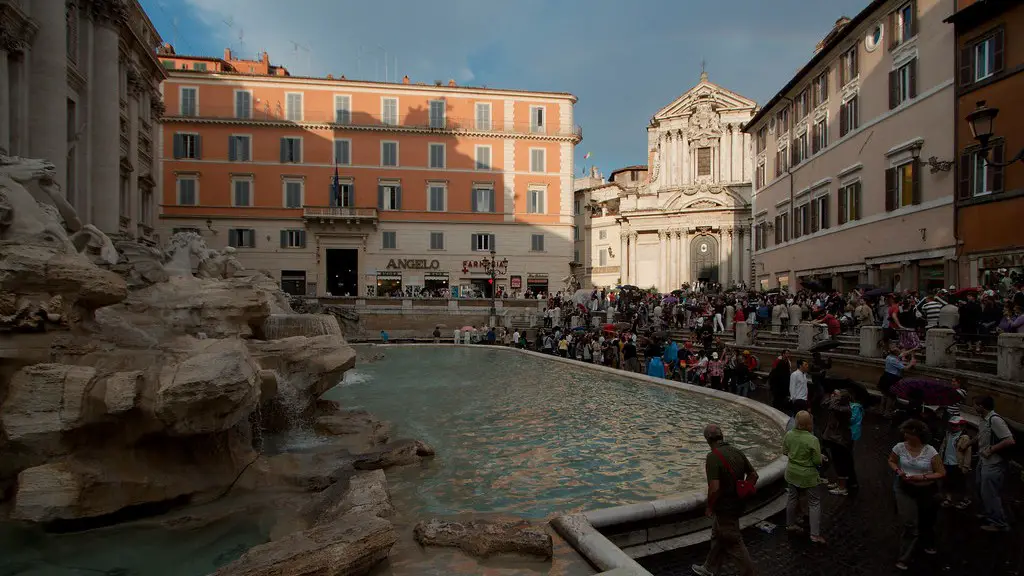The spoken language of ancient Rome is a fascinating topic to explore. It is a complex language that evolved over time and influenced many modern languages. Ancient Rome used a variety of languages, but the most important was Latin, which was spoken by the Roman conquerors and nobility. Latin was the language of power, law, public administration, and education, so everyone had to learn it. Latin also spread throughout the ancient world and became the lingua franca of the Roman Empire.
In its earliest days, Latin was heavily influenced by the Etruscan language, which had become the language of central Italy. When the Roman Republic was founded in the 7th century BC, a number of different languages were spoken by the citizens. Over time, however, Latin became more pervasive, eventually becoming the dominant language of Rome and its colonies. The Latin language was also heavily influenced by other languages, such as Greek and earlier Italic languages.
The Latin of ancient Rome was quite a different language than the one that we know today. It was a much simpler language, with fewer words and a simpler grammatical system. It was heavily focused on nouns and verbs, since verbs expressed the action or state of the noun. The language was also heavily inflected, meaning that the same word could be expressed in different forms depending on its function in a sentence. This made it quite easy to communicate quickly, but it could also be quite confusing for those not familiar with it.
Although Latin was the language of power, there were still other languages spoken by the people of the Roman Empire. Greek was the language of the aristocracy, and was spoken in many cities and towns throughout the Roman world. Other indigenous languages, such as Punic, were also widespread. In fact, there were more than 30 languages spoken at various times throughout the Roman Empire.
Latin has been around for centuries, and it has had a huge influence on modern languages. Over the centuries, it has been mixed with other languages, resulting in the development of many modern Romance languages, such as Spanish, French, and Italian. Today, the Latin alphabet is still in use, and the language still lives on in law and science, as well as in literature and philosophy.
Latin has also been used in a number of ways to express the concepts of law, justice, and other forms of governance that have been used throughout history. Its influence is still seen today in the Latin derivatives that make up so much of our legal vocabulary. In many ways, Latin was the language of the Roman Empire, and it is still very much alive and well today.
Evolution of Latin
Latin was an ever-evolving language, and over the years it changed with the culture and the times. Throughout history, Latin adapted and changed in order to fit the needs of the citizens. For example, during the Empire, Latin began to merge with other languages, such as Greek and Gaulish, creating a new dialect of the language. As the centuries passed, more and more words and phrases were added to the Latin language.
In addition to changing and adapting, Latin also helped to shape the English language. In many ways, the English language has its roots in Latin, as English words are often derived from Latin root words. This means that, even today, many English words have Latin origins. Latin and English also have many similar structures, such as the use of verb conjugations.
Even though Latin is no longer spoken as a primary language, it still has a huge impact on our culture and language. Its influence is visible even in current uses of the language, such as in legal documents and scientific terms. Although Latin is no longer the primary language of the Roman Empire, it still has a place in the linguistic landscape of our modern world.
Legacy of Latin
Latin will always have a place in our language and culture. Its influence is still felt today, as it is still used in our legal system and in many scientific terms. Even though the language is no longer spoken by large numbers of people, its legacy lives on in many modern languages. Latin has a rich history and its legacy extends beyond the language itself. It has helped shape the world we live in today and its influence will continue to be felt in the ages to come.
Latin has been used throughout history as a tool to express the concepts of law, justice, and more. It has a lasting impact on our language, as it has lent countless words to many modern tongues, such as Spanish, French, and Italian. It has helped to shape our legal systems and influenced the way we look at language. Latin is an important part of our culture, and its legacy will live on for generations to come.
Latin in Education
Latin is still studied and taught in many schools around the world as part of the classical education curriculum. From Latin roots, students can not only learn the ancient tongue, but also gain a deep understanding of the Ancient Roman culture. Even many modern English words have Latin roots, so these roots are utilized in learning English as well.
Learning Latin can also help students to understand the English language better, since so many of our words have Latin roots. By studying Latin, students can gain a better understanding of how languages work and how they evolve over time. It can also help expand their vocabulary and help them better understand and use language.
Latin was and is an important part of our culture and history, so it is still important to educate and inform people about the language. Knowing Latin can help give individuals a better understanding of the world around them. It can also help educate individuals on the rich history and diverse cultures of the Roman Empire.
Influence of Latin Today
Latin still has a big influence on our modern language and culture. Many of our legal terms and documents are written in Latin, a reminder of its importance in our legal systems today. Latin translations are still used in medicine, mathematics, and philosophy, reinforcing its influence on our scientific institutions. In addition, many of our institutionalized phrases and words are Latin in origin.
Even in daily life, Latin can be found in literature, music, and art. Its influence is still seen in the classical education and literature of Europe, as well as in the architecture of Rome and other cities throughout the Mediterranean. Latin can even still be found in religious liturgies and rituals, from the Latin texts of Catholic masses to the Latin phrases of the Eastern Orthodox liturgies.
Latin has a lasting impact on our culture and language, and its influence can still be seen throughout our modern world. Its legacy continues to live on, even after centuries of decline and evolution, reminding us of its importance in the past and its relevance to our present day.




